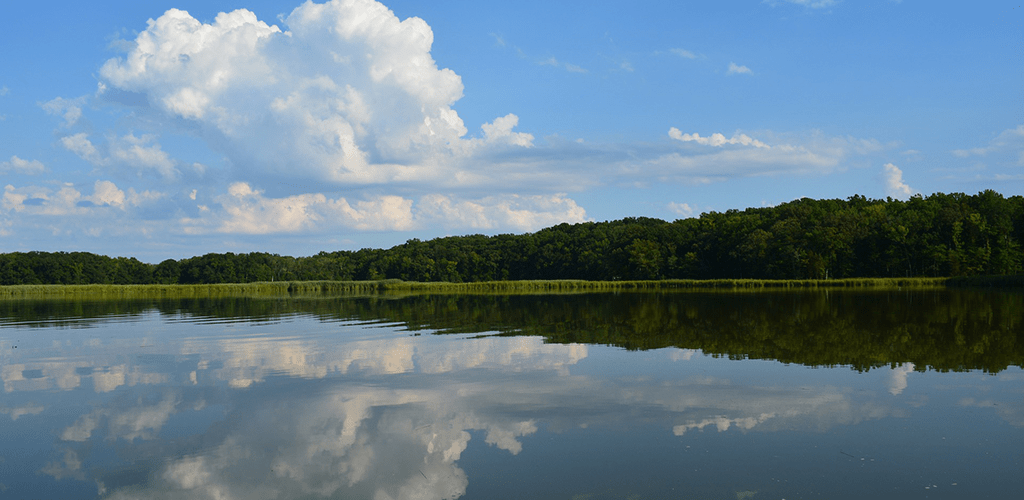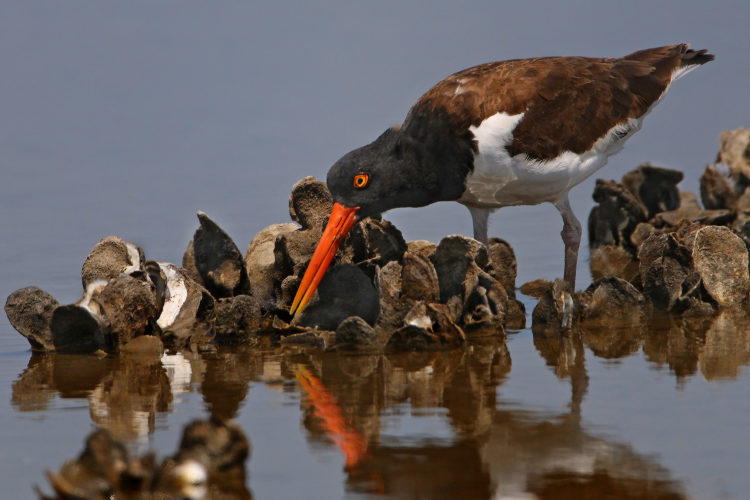We have much more to do and your continued support is needed now more than ever.
Is Maryland Shucking Its Oyster Sanctuaries?
New Report Assesses Oyster Sanctuary Program

Oysters on the Brink
The once bountiful oysters of the Chesapeake Bay have been critically depleted due to a number of factors:
-

Eastern oyster. Photo from NOAA Over-harvesting – By the late 1800’s nearly 20 million oysters were harvested from the Bay each year, supporting a booming seafood industry, supplying almost half the world’s supply of oysters, and even prompting Oyster Wars.
- Pollution and sedimentation – Polluted runoff from agricultural, urban, and suburban development, deforestation, and wetland destruction threaten the health of the Bay and its inhabitants, including oysters. Nutrient pollution from over-fertilization and animal waste from agricultural operations cause algae blooms and can lead to “dead-zones” (low oxygen areas) in the Bay. Sediment can cover reefs, suffocating oysters and other shellfish.
- Climate change – Carbon pollution, created by burning fossil fuels like coal, causes acidification of our waterways. Scientists are concerned that higher acidity levels may already be making it harder for oysters and other shellfish to produce the calcium carbonate needed to form their shells.
- Disease – Oysters are threatened by two parasitic diseases, Dermo and MSX. Stress caused by impaired water quality can make oysters more susceptible to diseases.
Sanctuary for Oysters
At the end of July 2016, the Maryland Department of Natural Resources (DNR) released a new report assessing the first five years of the expanded oyster sanctuary program. The program, initiated by the 2004 Chesapeake Bay Oyster Management Plan created these sanctuaries as areas permanently closed to harvest to help oyster populations begin to recover. In 2010, Maryland expanded the scale of its oyster sanctuaries to include 51 sites, 24% of the productive oyster bottom remaining in Maryland’s portion of the Chesapeake Bay. The balance of the productive oyster bottom (76%) remained open to the public shellfish fishery.
DNR’s report demonstrates that oysters appear to be thriving in the sanctuaries, while continuing to struggle in other locations in the Bay. Surprisingly, the report also suggests there is justification to consider adjustments to the boundaries and potentially opening once off-limits areas to harvest. However, Maryland’s oysters need more time to fully recover.
Oysters Needed for Healthy Bay
Oysters are essential, natural filters for the Bay. A single oyster can filter up to 50 gallons of water a day removing nutrients and sediment suspended in the water column. At historic population levels, oysters could filter a volume of water equal to that of the entire Bay (about 19 trillion gallons) in a week. Today, it would take the remaining Bay oysters more than a year.
A critical component of the Chesapeake Bay food web, oysters are an important food source for shorebirds like the American oystercatcher, crabs, anemones, sea nettles, and some fish. Oyster reefs also provide critical habitat and safe haven for many species of fish and other aquatic life.

Climate change is contributing to more frequent and severe storm events and contributing to sea level rise. Oyster reefs provide natural protection against coastal storms by attenuating or dissipating waves and by retaining sediment.
To help restore oyster populations, the National Wildlife Federation advocates for clean water policies at the state and federal level to protect the Chesapeake Bay and helped launch the Choose Clean Water Coalition in 2009. The National Wildlife Federation is working to ensure a more resilient Chesapeake Bay utilizing natural and nature-based solutions. Together with sustainable land use practices and efforts to reduce polluted runoff, we will continue to help oyster populations to ensure a clean Chesapeake Bay.
Help NWFHelp NWF continue its work in the Chesapeake Bay





















